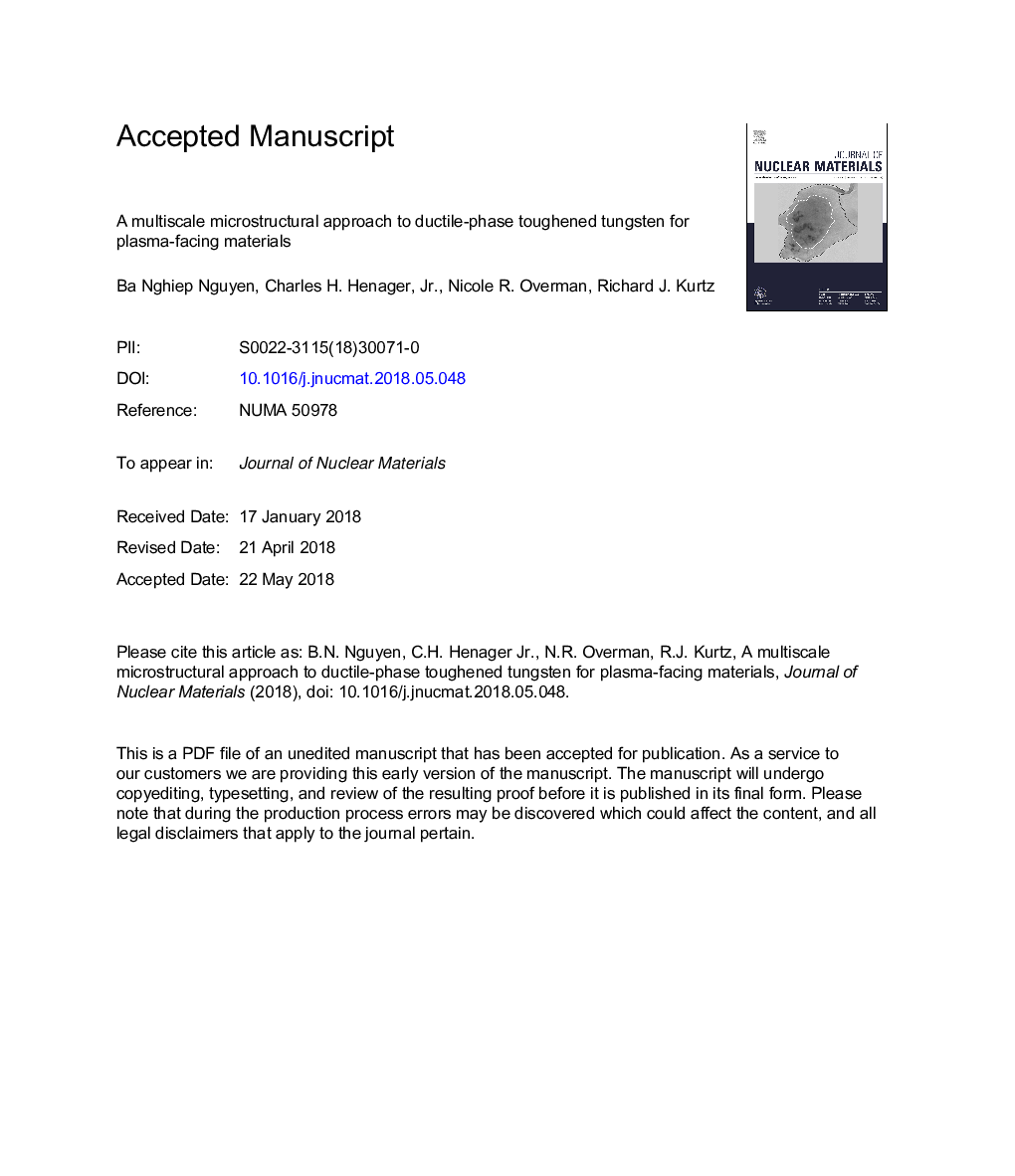| Article ID | Journal | Published Year | Pages | File Type |
|---|---|---|---|---|
| 7962970 | Journal of Nuclear Materials | 2018 | 33 Pages |
Abstract
Increasing fracture toughness and modifying the ductile-brittle transition temperature of a tungsten-alloy relative to pure tungsten has been shown to be feasible by ductile-phase toughening (DPT) of tungsten for future plasma-facing materials for fusion energy. In DPT, a ductile phase is included in a brittle tungsten matrix to increase the overall work of fracture for the material. This research models the deformation behavior of DPT tungsten materials, such as tungsten-copper composites, using a multiscale modeling approach that involves a microstructural dual-phase (copper-tungsten) region of interest where the constituent phases are finely discretized and are described by a continuum damage mechanics model. Large deformation, damage, and fracture are allowed to occur and are modeled in this region that is connected to adjacent homogenized elastic regions to form a macroscopic structure, such as a test specimen. The present paper illustrates this multiscale modeling approach to analyze unnotched and single-edge notched (SENB) tungsten-copper composite specimens subjected to three-point bending. The predicted load-displacement responses and crack propagation patterns are compared to the corresponding experimental results to validate the model. Such models may help design future DPT composite configurations for fusion materials, including volume fractions of ductile phase and microstructural optimization.
Related Topics
Physical Sciences and Engineering
Energy
Nuclear Energy and Engineering
Authors
Ba Nghiep Nguyen, Charles H. Jr., Nicole R. Overman, Richard J. Kurtz,
